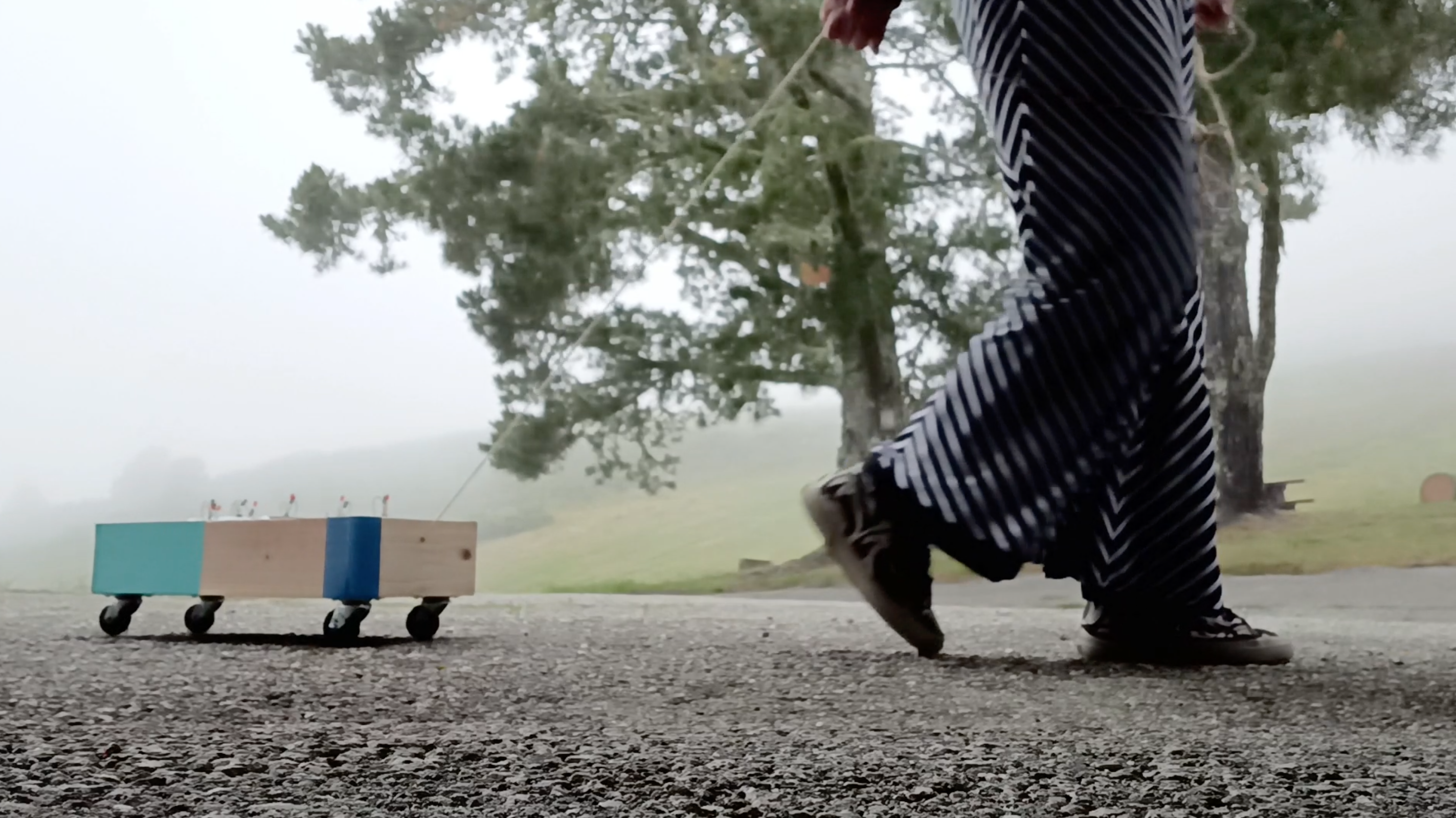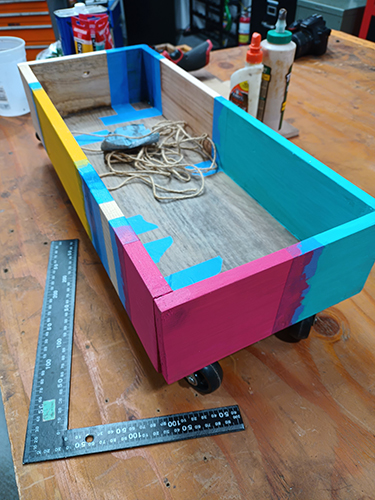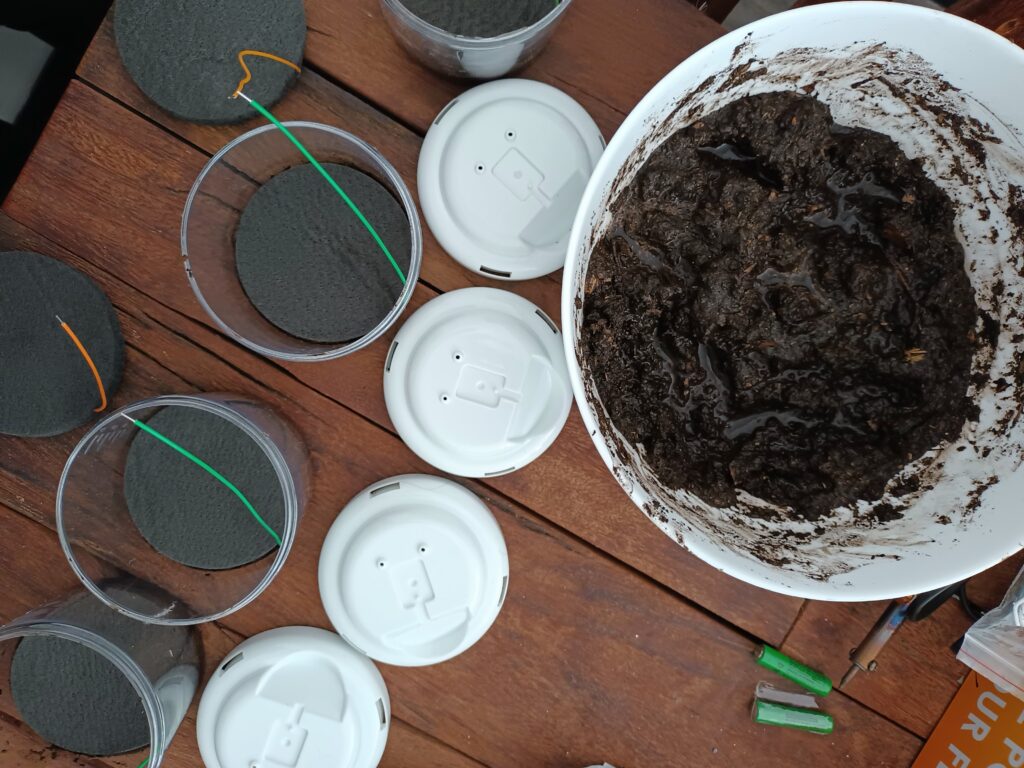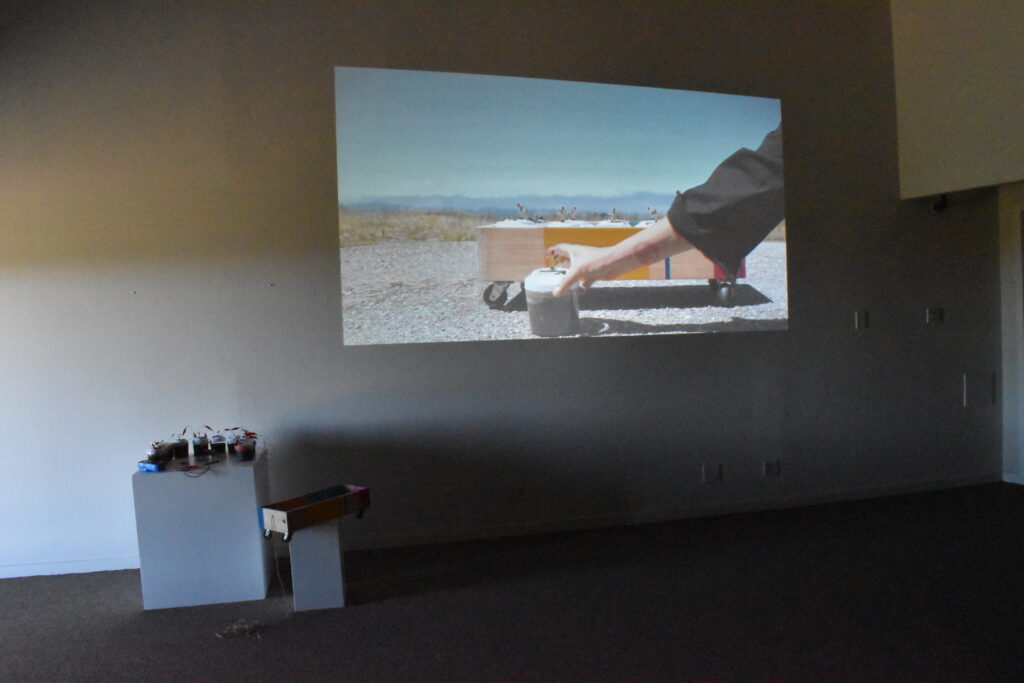
Leonardo@Djerassi Artist Residency Program 2023
Woodside, CA, SF
[Wooden cart, :Klef piano, Microbit microcontroller, cardboard lasercut case]
“And so I look for real stories that are also speculative fabulations and speculative realisms. These are stories in which multispecies players, who are enmeshed in partial and flawed translations across difference, redo ways of living and dying attuned to still possible finite flourishing, still possible recuperation.”
Donna Haraway, Staying With The trouble: Making Kin in the Chtulucene
Mutualisms are defined as interactions between organisms of two different species, in which each organism benefits from the interaction in some way. These types of interaction are common and ubiquitous throughout all ecosystems, and scientists are increasingly recognizing the important role that they play in ecology.
Microbial fuel cells are bio-electrical devices that allow to utilize the energy of microbes by converting chemical energy into electrical energy under anaerobic conditions. An MFC is made up of two electrodes – an anode and a cathode – linked by an electrical connection. Bacteria breathe out electrons, produced as part of their normal metabolism, onto the anode. These electrons can be collected as an electrical current. […] When the billions of bacteria that are growing together combine, the nanowires join to form conductive biofilms. (The Conversation, 2011).
The first ideas around electrochemical activity between bacterial or fungal species can be traced back to 1911 on a paper written by M. C. Potter, Professor of Botany in the University of Durham called Electrical Effects accompanying the Decomposition of Organic Compounds. “Waller approaches very suggestively the existence of two opposing forces in the presence of analytic and synthetic processes, and recognizes that the functions of assimilation and respiration might be mutually antagonistic as regards to visible electric effects”. In his experiment “live cultures of Escherichia coli and Saccharomyces spp., produced electricity using platinum macro-electrodes in a battery type setup with sterile media”.
Microbial fuel cells are bio-electrical devices that allow to utilize the energy of microbes by converting chemical energy into electrical energy under anaerobic conditions. An MFC is made up of two electrodes – an anode and a cathode – linked by an electrical connection. Bacteria breathe out electrons, produced as part of their normal metabolism, onto the anode. These electrons can be collected as an electrical current. […] When the billions of bacteria that are growing together combine, the nanowires join to form conductive biofilms. (The Conversation, 2011).
The first ideas around electrochemical activity between bacterial or fungal species can be traced back to 1911 on a paper written by M. C. Potter, Professor of Botany in the University of Durham called Electrical Effects accompanying the Decomposition of Organic Compounds. “Waller approaches very suggestively the existence of two opposing forces in the presence of analytic and synthetic processes, and recognizes that the functions of assimilation and respiration might be mutually antagonistic as regards to visible electric effects”. In his experiment “live Cultures of Escherichia coli and Saccharomyces spp., produced electricity using platinum macro-electrodes in a battery type setup with sterile media” (Potter, M.C., 1911).
There are too many stories told by humans, about humans. There can, there needs to be, stories about other organisms working with the human, and mostly, about interruptions. These emergencies can allow for new stories, stories that talk about resistance, about new configurations and repurposing in McLuhan terms, how “the tools shape us”.
Microbial Powered Improvisations was a project that intended to use MFC’s as a way to create more mutualistic ways of producing, storing and consuming energy to provoke human improvisation through a :KLEF piano microcontroller. Although powering something will always invite for extraction, as Geobacter oxidation is present in this process, the purpose was to harness energy in a more organic process.
The project is conformed of two parts, a preparation phase and a videodocumentation.
The preparation phase consisted in the construction of the cart at the residency’s workshop, needed to mobilize the MFC’s. Different samples of earth were taken from the ranch and were assembled in the fuel cells. The cells were then placed at the cart and hauled to long walks in the woods, to friend gatherings, gazing at the stars, etc., to keep a keen eye on the LED on top of each of these mud cells. The cells were then connected in several ways (in parellel or in series, or both) to harness this collective energy as some of the artisis in the residency started experimenting with the :KLEF piano.
While the wattage of the cells was theorically enough to power the micro:bit microcontroller, fuel cells have low energy density when it comes to power storage, an “electrode must be made nearly 100 times larger to double the power output of an average SMFC one time” (Ewing et al., 2014). This only means that “the redox potential between the substrate being consumed by the microbe and the anode of the MFC must also be kept as small as possible to get the greatest voltage from the MFC; however, if the redox potential is made too small, the microbe will find another metabolic path to follow that is more favorable and will provide more energy for the microbe” (Logan, B.E. and Regan J. M., 2006).
The videodocumentation piece shows the outcome of the project at the beautiful Djerassi Artist Resident Program.







Special Thanks to Dr. Natalie Gosnell, Dr. Ethan Janney, Dr. Theresa Connors, Tim DeVoe, McKenzie Genin, Valerie Harrison and the wonderful meals from Chef Mary.